For a farmer caught up in a TB breakdown, the fallout can be financially and emotionally draining.
The price of a TB reactor is restrictions on the farm’s ability to trade, more stringent and regular testing, and sleepless nights for the farmer.
Around 4,000 herds experience a TB breakdown every year. They account for less than 4% of the 111,000 herds in Ireland but often, these farmers feel like the forgotten 4%.
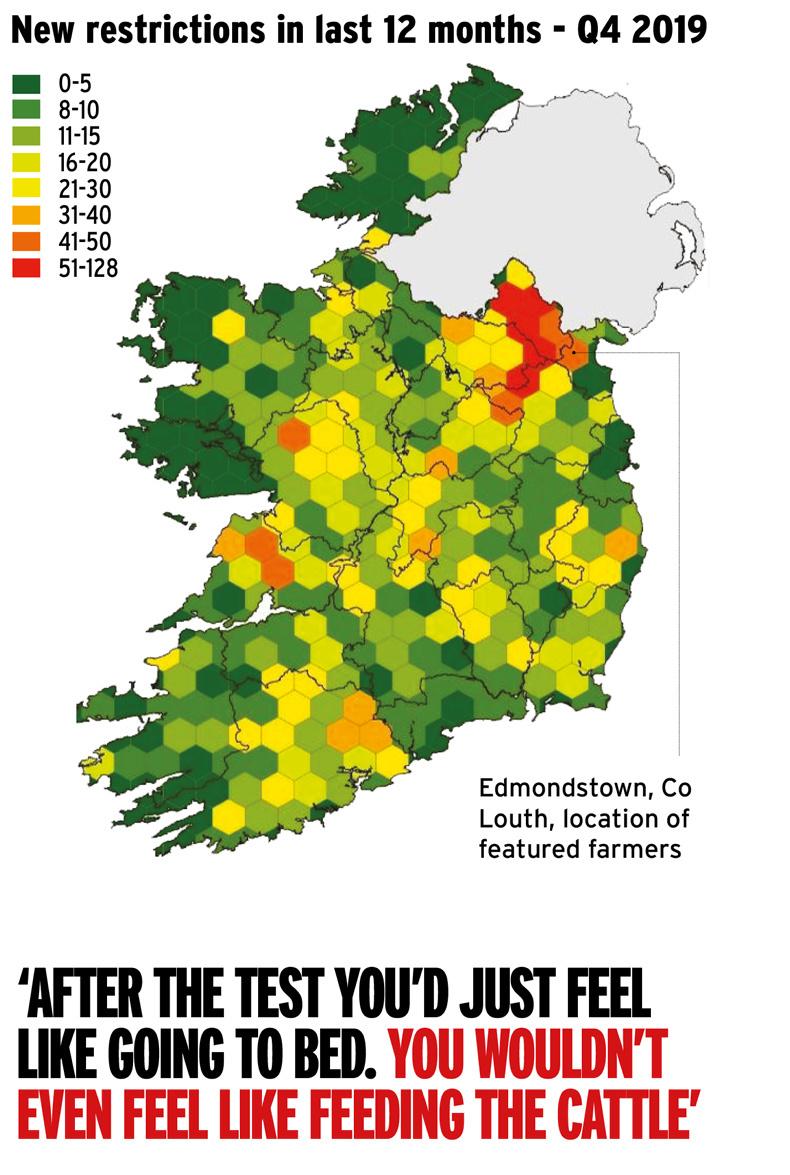
Areas such as Monaghan, north Cork and Wicklow are known TB blackspots but Louth has seen a steady rise in TB incidence from 3.9% five years ago to 5.5% last year.
The Irish Farmers Journal met three farmers from Edmondstown, Co Louth, to hear first-hand their experience of being locked-up.
The registered letter
“You’re made feel like a criminal in your own yard,” says Hugh Brennan, a suckler farmer who farms alongside his father Liam, a dairy farmer.
Do this, do that, wash sheds, you’re made to feel like it’s your fault
Both herds are currently locked up, with the dairy herd having the worst breakdown. Of their 300 cows, 90 have gone down as reactors within the last 12 months.
“You get the registered letter, it’s very threatening. Do this, do that, wash sheds, you’re made to feel like it’s your fault. We’ve been through every option that we’ve been given to try and eradicate the thing and it’s just lingering on and on,” says Hugh.
The moment he realised the dairy farm was in serious trouble was after one test where 21 animals went down as reactors.
On his own suckler farm he had his first reactor this year but it has already led to serious financial implications.
“I’ve three pens of bullocks that should have gone in February to meet bills and loans and they can’t go because of one cow that’s locked me up.
“Those three pens are going to have to be finished now, I’m going to have to buy meal for them which I normally don’t, so it just throws the whole thing off.”
Because they were older cows with more than five calves I got very poor money
Pat McDonnell is another suckler farmer from the area. In August 2018, he lost 23 cows and 15 weanlings after a test prompted by a breakdown in a nearby herd. They had tested clear only four months earlier.
“Because they were older cows with more than five calves I got very poor money. I think they averaged €1,120. It wouldn’t even buy you a maiden heifer to put in calf.
“We decided we wouldn’t try replacing them because you didn’t know where you were buying from.
“We decided to breed up our own and back last August [2019] we went down again.”
Pat lost a further 11 cows and three weanlings. Having had 70 cows, he is calving down just 35 this year.
Even for farmers who do not lose significant amounts of animals, a TB breakdown can cause havoc. Gerry Brennan contract rears heifers. At a time when he would normally have 200 animals on his farm, there are just 78.
It’s gone to a stage in our place where the cheque book is just closed
“We had one reactor last March, then we had two clear tests and we had another reactor in January 2020. We can’t get stock in.
“We’re waiting for our first 60 days to pass so it’s the end of June, best-case scenario,” says Gerry.
“It’s gone to a stage in our place where the cheque book is just closed. Even if you did get clean you’d have second thoughts about spending
more money to do anything with the farm.”
Sleepless nights
Reflecting on the level of control they have lost over their own business is emotive for all of them.
“I feel like nobody thinks of the farmer in this. There’s more thought of the wildlife and the cattle but nobody thinks of the farmer. He comes last,” Gerry says.
“The week of the test used to never cause me trouble but I nearly wouldn’t sleep at all now.
“Even for your neighbour, if you know he’s testing you’re waiting for the phonecall to see how his test went.”
Pat agrees and says he feels “sick to his stomach” on test day. The hours and days after a failed test are arguably worse.
“After the test you’d just feel like going to bed. You wouldn’t even feel like feeding the cattle,” says Gerry. He adds that the understanding among other farmers who are locked up helps ease the burden.
Pat and Hugh both have painful memories of losing cattle.
On one occasion, heavily in-calf cows went down on Hugh’s father’s farm.
They weren’t even six months of age
“When you see cows due to calve in a month’s time going down as they should be going straight into production and there should be a dropped calf in the shed, it’s very hard to then turn around and bull cows again,” says Hugh.
For Pat, one of the lowest moments was when 15 weanlings went down as reactors and had to be humanely killed.
“I had to get the knackery owner over and in the shed where you’re trying to keep them alive we had to shoot them. They weren’t even six months of age.”
Enormous strides have been made lowering the levels of TB since Ireland’s eradication programme was first introduced in 1954. However, eradication remains elusive.
A new TB strategy with the goal of eradication by 2030 is at an advanced stage of development.
Among the proposals are a more comprehensive herd risk categorisation system and the possibility of making this information available to other farmers on a voluntary or mandatory basis.
TB eradication is a Department priority, with the programme costing over €90m annually
Hugh Brennan feels such rules and restrictions would be extremely harsh. Farmers would be “branded”, he believes, unable to sell their cattle for market value.
TB eradication is a Department priority, with the programme costing over €90m annually.
Costs have risen by 10% in the last five years, with financial support payments to farmers accounting for over half the increase. It has triggered a cost-benefit analysis by Grant Thornton into TB compensation.
No one puts any value on the farmer’s time or the stress
“If they cut the compensation to the farmers, it’s bad as it is, but if they cut it they will lose all help from the farmers,” Pat believes.
“No one puts any value on the farmer’s time or the stress.”
Hugh Brennan
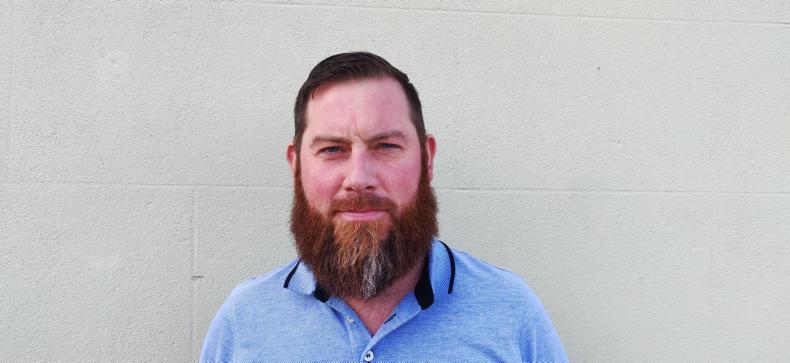
Hugh Brennan
Enterprise: Suckler and dairy
Time since first lock-up: 2018 (dairy), 2020 (suckler)
Number of reactors: 90 dairy cows, one suckler cow
Pat McDonnell
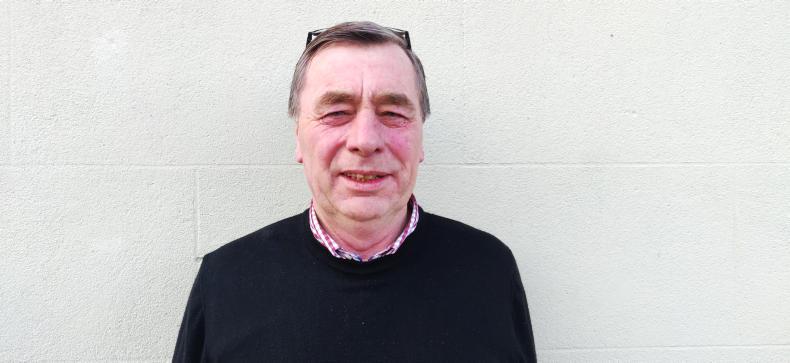
Pat McDonnell
Enterprise: Suckler
Time since first lock-up: August 2018
Number of reactors: 33 cows and 18 weanlings
Gerry Brennan

Gerry Brennan
Enterprise: Contract rearing
Time since first lock-up: March 2019
Number of reactors: Two
Read more
TB Forum recommends 10 key measures to eradicate TB
EU proposals for TB tests not finalised
For a farmer caught up in a TB breakdown, the fallout can be financially and emotionally draining.
The price of a TB reactor is restrictions on the farm’s ability to trade, more stringent and regular testing, and sleepless nights for the farmer.
Around 4,000 herds experience a TB breakdown every year. They account for less than 4% of the 111,000 herds in Ireland but often, these farmers feel like the forgotten 4%.

Areas such as Monaghan, north Cork and Wicklow are known TB blackspots but Louth has seen a steady rise in TB incidence from 3.9% five years ago to 5.5% last year.
The Irish Farmers Journal met three farmers from Edmondstown, Co Louth, to hear first-hand their experience of being locked-up.
The registered letter
“You’re made feel like a criminal in your own yard,” says Hugh Brennan, a suckler farmer who farms alongside his father Liam, a dairy farmer.
Do this, do that, wash sheds, you’re made to feel like it’s your fault
Both herds are currently locked up, with the dairy herd having the worst breakdown. Of their 300 cows, 90 have gone down as reactors within the last 12 months.
“You get the registered letter, it’s very threatening. Do this, do that, wash sheds, you’re made to feel like it’s your fault. We’ve been through every option that we’ve been given to try and eradicate the thing and it’s just lingering on and on,” says Hugh.
The moment he realised the dairy farm was in serious trouble was after one test where 21 animals went down as reactors.
On his own suckler farm he had his first reactor this year but it has already led to serious financial implications.
“I’ve three pens of bullocks that should have gone in February to meet bills and loans and they can’t go because of one cow that’s locked me up.
“Those three pens are going to have to be finished now, I’m going to have to buy meal for them which I normally don’t, so it just throws the whole thing off.”
Because they were older cows with more than five calves I got very poor money
Pat McDonnell is another suckler farmer from the area. In August 2018, he lost 23 cows and 15 weanlings after a test prompted by a breakdown in a nearby herd. They had tested clear only four months earlier.
“Because they were older cows with more than five calves I got very poor money. I think they averaged €1,120. It wouldn’t even buy you a maiden heifer to put in calf.
“We decided we wouldn’t try replacing them because you didn’t know where you were buying from.
“We decided to breed up our own and back last August [2019] we went down again.”
Pat lost a further 11 cows and three weanlings. Having had 70 cows, he is calving down just 35 this year.
Even for farmers who do not lose significant amounts of animals, a TB breakdown can cause havoc. Gerry Brennan contract rears heifers. At a time when he would normally have 200 animals on his farm, there are just 78.
It’s gone to a stage in our place where the cheque book is just closed
“We had one reactor last March, then we had two clear tests and we had another reactor in January 2020. We can’t get stock in.
“We’re waiting for our first 60 days to pass so it’s the end of June, best-case scenario,” says Gerry.
“It’s gone to a stage in our place where the cheque book is just closed. Even if you did get clean you’d have second thoughts about spending
more money to do anything with the farm.”
Sleepless nights
Reflecting on the level of control they have lost over their own business is emotive for all of them.
“I feel like nobody thinks of the farmer in this. There’s more thought of the wildlife and the cattle but nobody thinks of the farmer. He comes last,” Gerry says.
“The week of the test used to never cause me trouble but I nearly wouldn’t sleep at all now.
“Even for your neighbour, if you know he’s testing you’re waiting for the phonecall to see how his test went.”
Pat agrees and says he feels “sick to his stomach” on test day. The hours and days after a failed test are arguably worse.
“After the test you’d just feel like going to bed. You wouldn’t even feel like feeding the cattle,” says Gerry. He adds that the understanding among other farmers who are locked up helps ease the burden.
Pat and Hugh both have painful memories of losing cattle.
On one occasion, heavily in-calf cows went down on Hugh’s father’s farm.
They weren’t even six months of age
“When you see cows due to calve in a month’s time going down as they should be going straight into production and there should be a dropped calf in the shed, it’s very hard to then turn around and bull cows again,” says Hugh.
For Pat, one of the lowest moments was when 15 weanlings went down as reactors and had to be humanely killed.
“I had to get the knackery owner over and in the shed where you’re trying to keep them alive we had to shoot them. They weren’t even six months of age.”
Enormous strides have been made lowering the levels of TB since Ireland’s eradication programme was first introduced in 1954. However, eradication remains elusive.
A new TB strategy with the goal of eradication by 2030 is at an advanced stage of development.
Among the proposals are a more comprehensive herd risk categorisation system and the possibility of making this information available to other farmers on a voluntary or mandatory basis.
TB eradication is a Department priority, with the programme costing over €90m annually
Hugh Brennan feels such rules and restrictions would be extremely harsh. Farmers would be “branded”, he believes, unable to sell their cattle for market value.
TB eradication is a Department priority, with the programme costing over €90m annually.
Costs have risen by 10% in the last five years, with financial support payments to farmers accounting for over half the increase. It has triggered a cost-benefit analysis by Grant Thornton into TB compensation.
No one puts any value on the farmer’s time or the stress
“If they cut the compensation to the farmers, it’s bad as it is, but if they cut it they will lose all help from the farmers,” Pat believes.
“No one puts any value on the farmer’s time or the stress.”
Hugh Brennan

Hugh Brennan
Enterprise: Suckler and dairy
Time since first lock-up: 2018 (dairy), 2020 (suckler)
Number of reactors: 90 dairy cows, one suckler cow
Pat McDonnell

Pat McDonnell
Enterprise: Suckler
Time since first lock-up: August 2018
Number of reactors: 33 cows and 18 weanlings
Gerry Brennan

Gerry Brennan
Enterprise: Contract rearing
Time since first lock-up: March 2019
Number of reactors: Two
Read more
TB Forum recommends 10 key measures to eradicate TB
EU proposals for TB tests not finalised








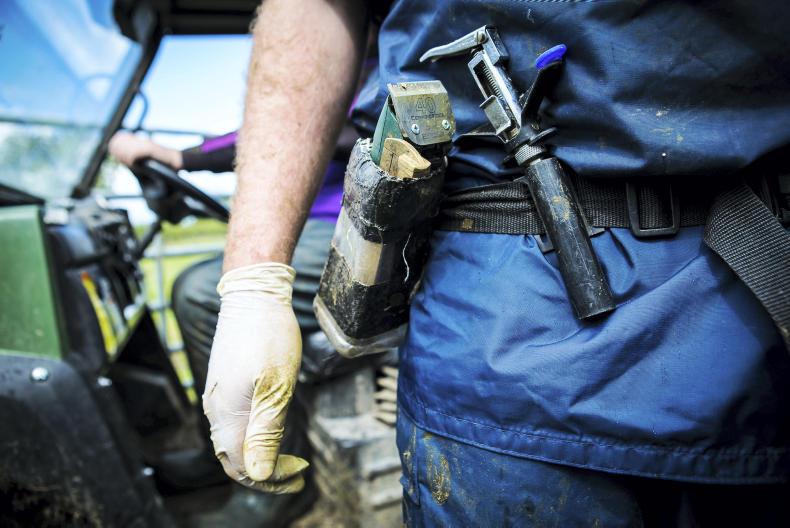
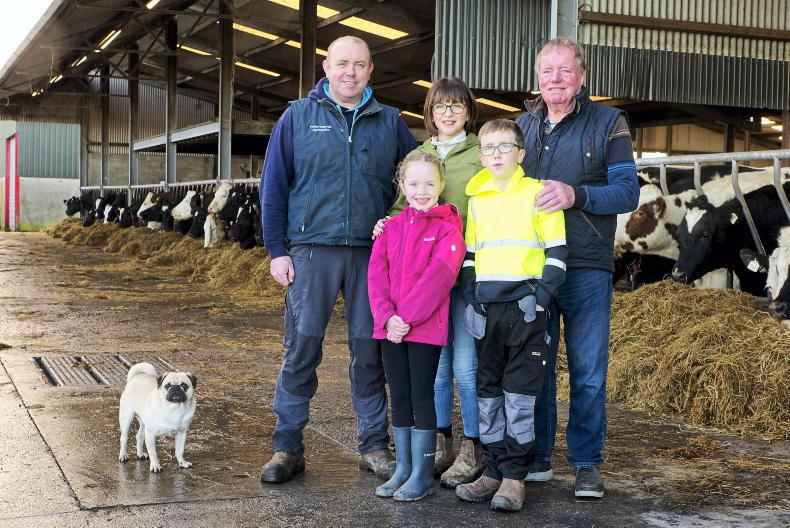
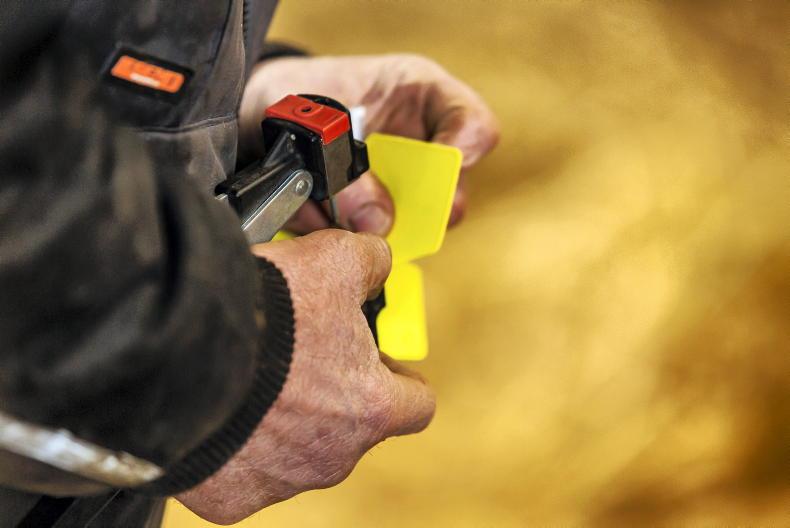
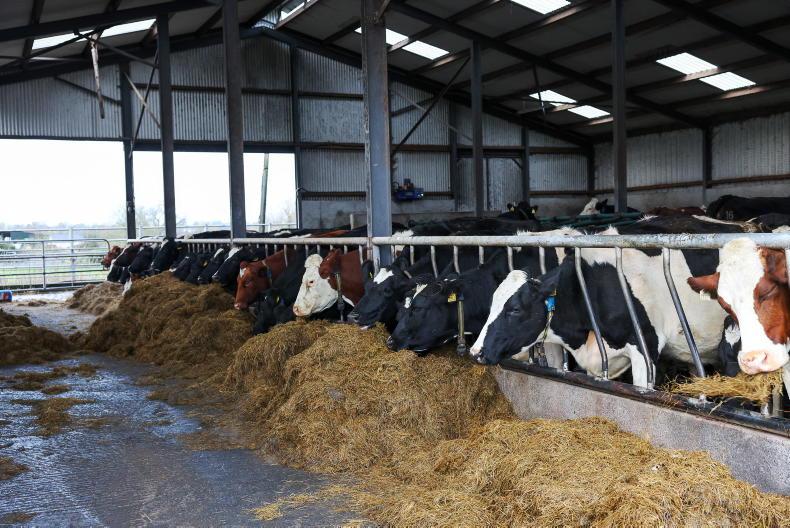
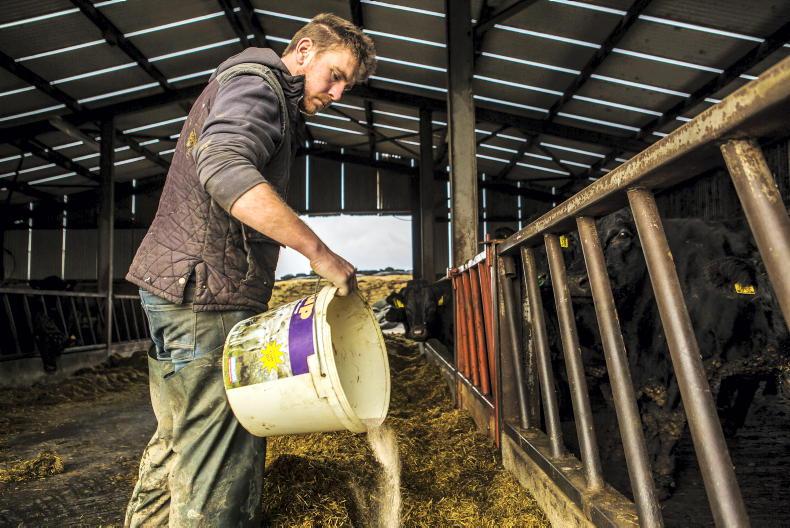
SHARING OPTIONS